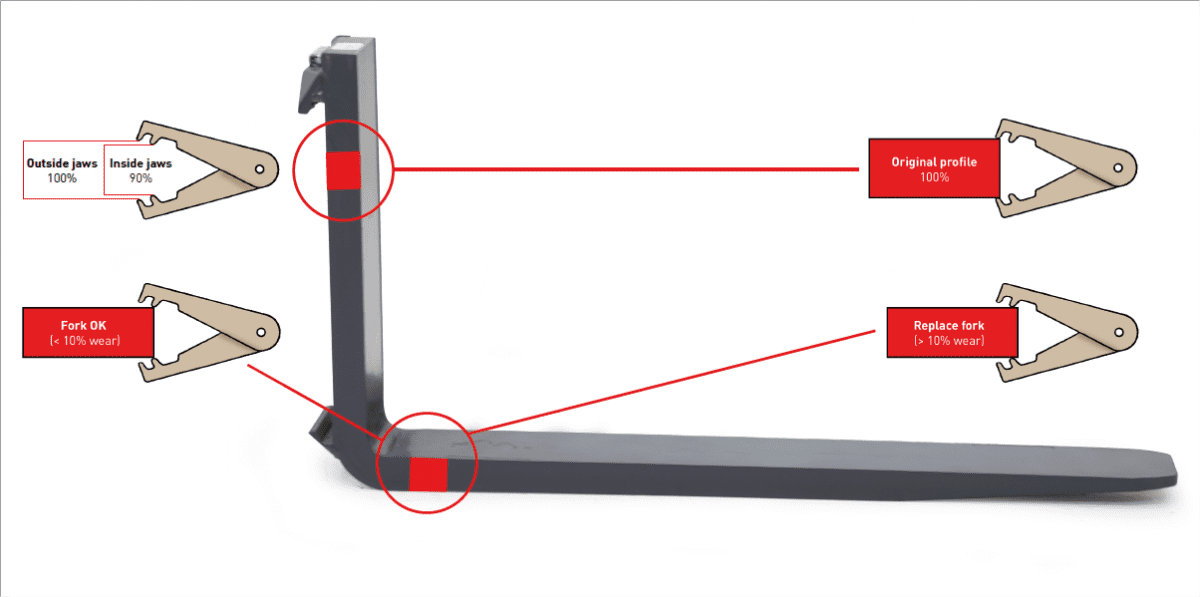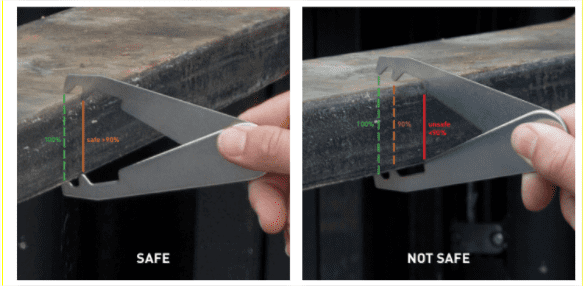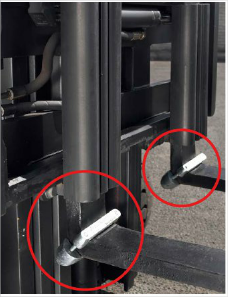Inspect your lift truck forks to increase your safety
Surprisingly many worn forks on the shop floor
Did you know that it is recommended to check your lift truck forks for wear every year? A lot of lift truck drivers forget to perform this inspection. That's a shame, as working with worn or cracked forks is dangerous. A regular inspection prevents serious consequences:
- Large or small cracks
- Falling loads caused by a breaking fork
- Damage to goods, racks or persons
In addition to dangerous situations, worn forks also entail additional costs: a direct cost such as the purchase of new forks, indirect costs such as the transshipment costs for loading and unloading goods or even an unforeseen cost caused by incapacitated personnel.
Prevention is better than cure
What else can you do, besides checking your forks on a regular basis? A correct use of the forks is vital. Forks used in a correct manner not only increase safety, but also last considerably longer. By means of a simple visual inspection, you can quickly and easily assess the condition of your forks.
Look out for these signs of wear
Are your forks bent? Does the fork heel show hair fractures? Are certain sections of the forks getting thinner? These are all signs that your forks are on the decline!
Measuring the condition of your forks
The condition of forks can easily be measured by means of the fork thickness gauge, a useful tool that can easily detect fork wear. Why is it important to measure the degree of wear? If the wear percentage is 10%, the capacity of the forks decreases by no less than 20%. So that is why we need to take into account the legislation (ISO 5057) that determines that, when only 90% of the original thickness of a fork remains, the fork must be considered worn.
But how do you proceed?
First you measure the thickness of the fork back with the outer teeth of the fork wear gauge. Next, you slide the gauge over the fork blade. Make sure that you measure at least 50 mm in front of the start of the heel radius. If the inner teeth of the fork gauge can slide freely over the fork blade, the fork is worn and must be replaced.


How can you extend the lifespan of your forks?
- Don't lift loads that are too heavy for your forks. The maximum capacity per fork is stated on the side of the fork back.
- Install your forks in the correct manner.
- Never drag the forks across the floor.
- Adjust the lift chains correctly, so that forks are situated sufficiently high above the floor.
- Use a fork heel protector (see photograph) or fork wear plates.
- Never push loads with the tips of the forks.
- Never use the tips of the forks as a lever to lift heavy loads.

Using the wrong forks can have serious consequences. That is why prevention is better than cure. Regular inspection of the condition of the forks prevents many problems and costs. Also use your forks in a correct manner. Discover all necessary products to extend the lifespan of your forks in our Forks Special.
You can also go to this website to view all forks, fork extensions and weighing forks offered by CAM attachments.
Andrea, TVH blogger
